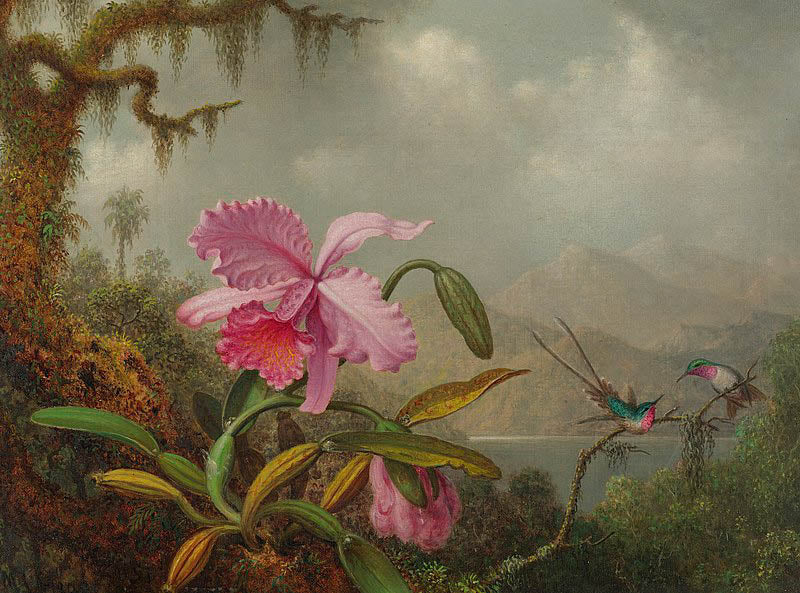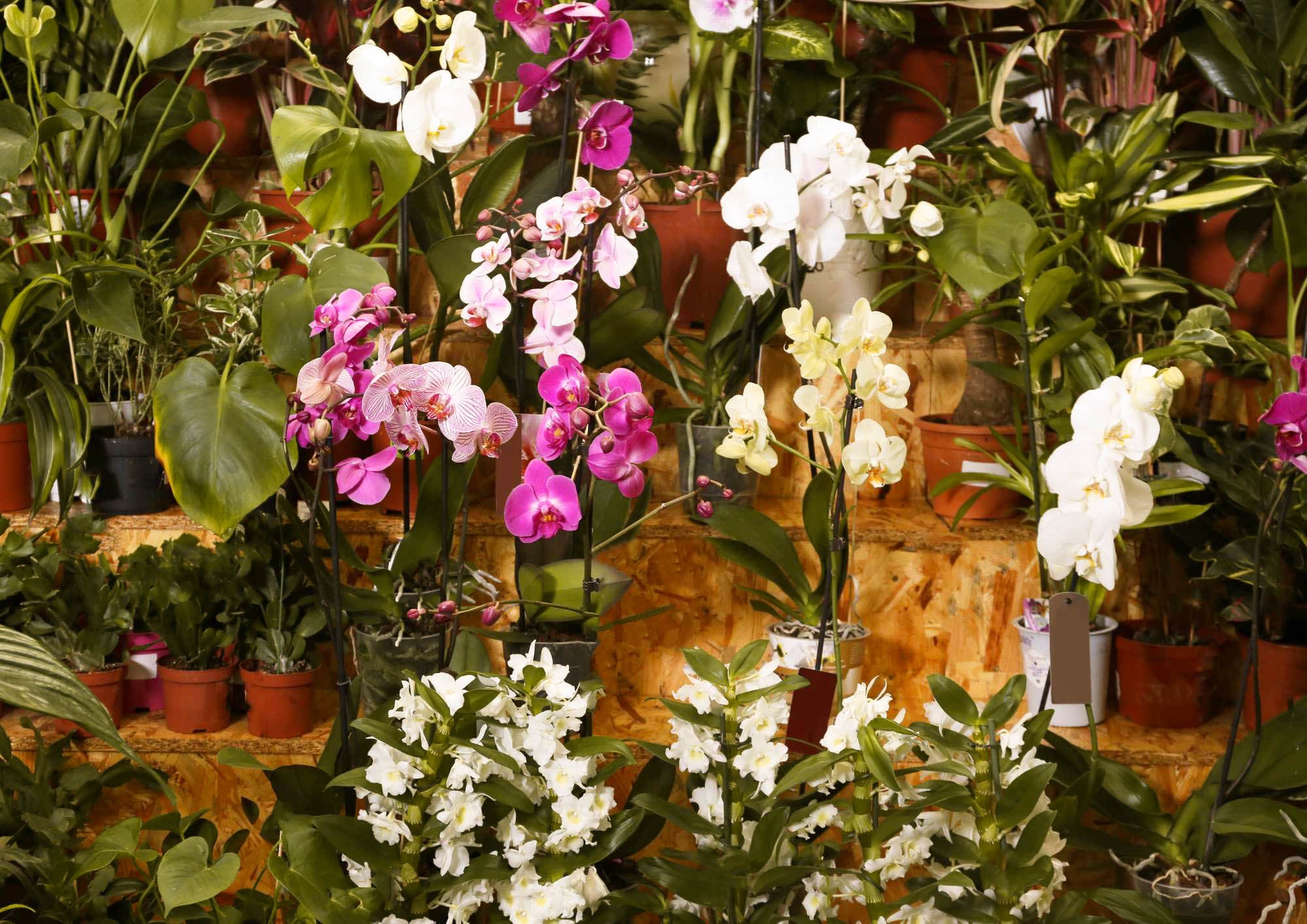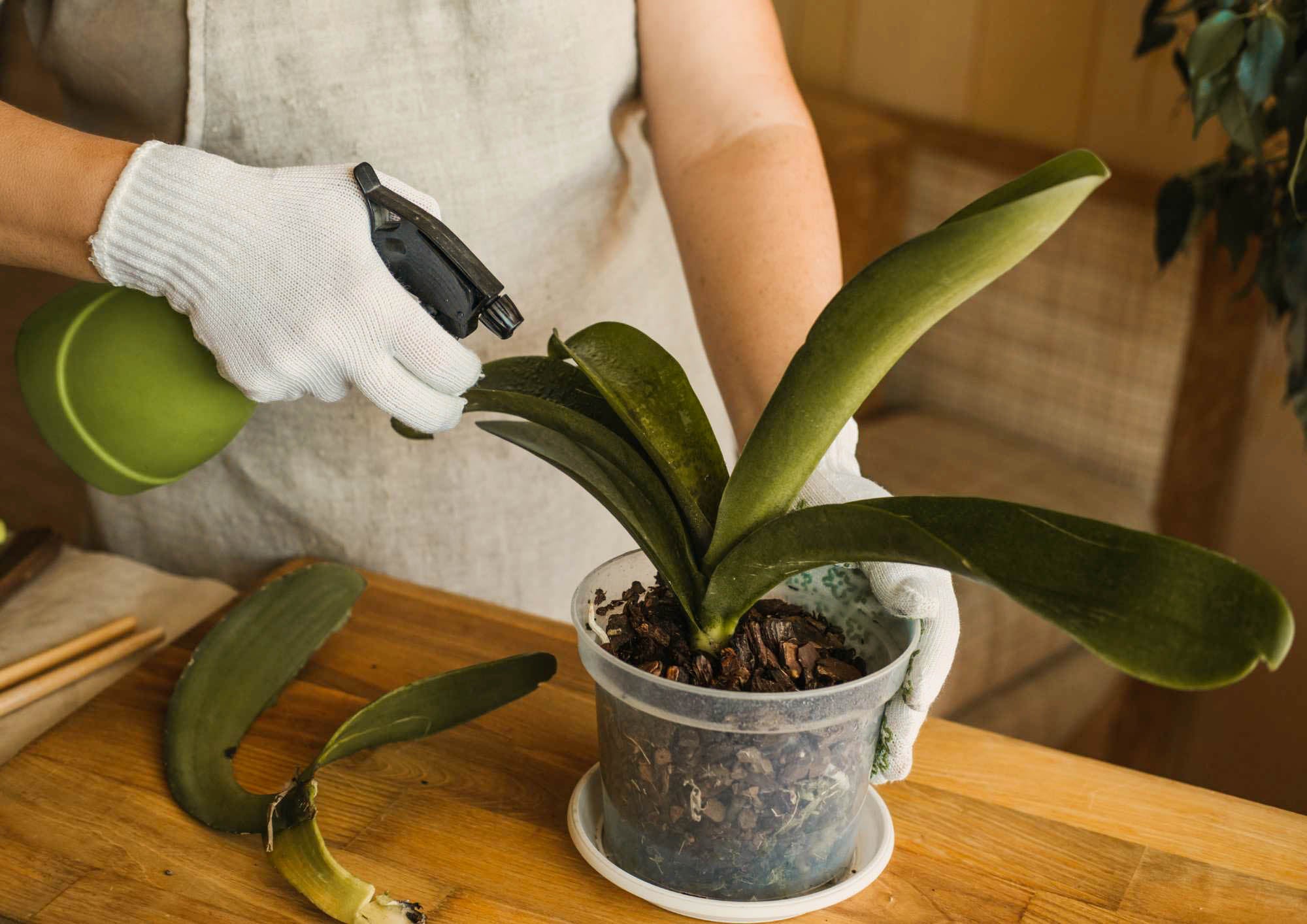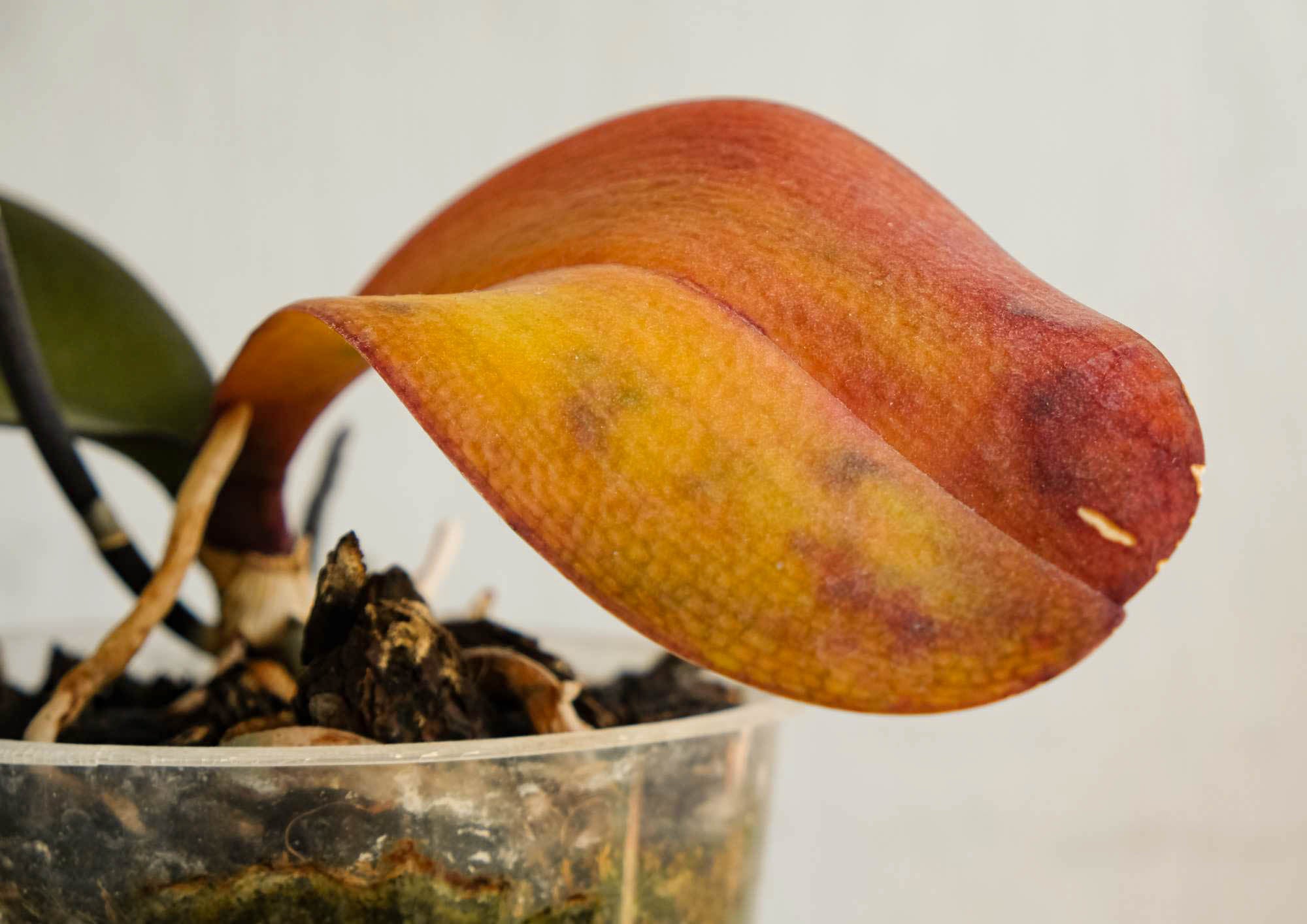With around 28,000 different options available, it's no wonder orchids have become increasingly popular when it comes to greenifying homes. But aside from their abundance, you can't deny that orchids are simply one of the most elegant plants around.
That said, I used to feel pretty intimidated by them. You often see orchids in fancy homes, which can make you think they need expert care. And those delicate, intricately beautiful flowers? They look like they could fall off if you so much as look at them the wrong way.
Yet, after diving into my research, I've discovered that orchids, like all plants, simply have their preferences. Once you meet their needs, they can bring joy for years on end. Sure, they might shed their delicate flowers along the journey, but rest assured, they'll bloom again when the time is right.
In this blog post, we will be exploring the fascinating history of orchids, some interesting albeit disturbing facts, and of course care and styling tips.
Phalaenopsis Amabilis

The orchid we commonly encounter goes by the scientific name Phalaenopsis amabilis. Quite a mouthful, I agree. But fear not, it also has a more palatable name: the moth orchid. And if you squint just right, you'll see why - its flowers indeed resemble clusters of delicate little moths.
For the sake of my sanity, I won't be delving into all 28,000 species of orchids in this blog post. So, whenever I mention an orchid, just assume I'm talking about the Phalaenopsis amabilis, also known as the moth orchid.
You’ll never look at orchids the same way after this fun fact: The word "orchid" actually comes from the Greek word "Orchis," which means "testicle." But hold on, it's not because of their flower shape, as you might expect. It's because of the shape of their tuberous root system.
History of Orchids

Martin Johnson Heade, Orchids and Hummingbirds, signed M.J. Heade, l.l. Oil on canvas, 1875-90
Orchids are one of those plant species that are rich-rich with history. Over the ages they were valued in many cultures for their beauty, symbolism and medicinal properties.
Ancient Greece:
As I've already mentioned, orchids inherited their name from the Greek word orchis, which lovingly translates to testicles. And get this: orchids were once thought to be aphrodisiacs, so they were sometimes used in love potions. So of course the Greeks also associated the orchid with fertility and virility.
Ancient China:
Orchids have been cultivated in China for over 3,000 years, and they have tremendous cultural significance. Orchids were seen as a symbol of integrity, refinement and friendship.
They were also depicted in art forms like poetry and paintings when feelings of nobility and elegance were evoked. Orchids were also believed to have many healing properties, which is why they were used in medicines.
Japan:
In Japan, orchids have been lovingly tended for generations, weaving deep cultural meanings into their delicate petals. Within Japanese tradition, these graceful flowers embody beauty, elegance, and purity, gracing the canvas of traditional art forms like paintings, ceramics, and textiles.
But beyond their aesthetic appeal, orchids carry a profound symbolism in the Samurai ethos of Bushido, standing as emblems of strength and resilience amidst life's trials.
Victorian England:
In the Victorian era, cultivating orchids became a trendy pastime among the wealthy upper class. People were captivated by their unique beauty and scarcity, sparking what was known as "orchid mania."
Collectors spared no expense in acquiring rare orchid specimens from all corners of the globe, often spending fortunes to expand their collections. This eagerness also spurred advancements in orchid hybridization techniques, resulting in the emergence of a plethora of new orchid varieties.
Indigenous Cultures:
In indigenous cultures worldwide, orchids are deeply appreciated for their spiritual essence, playing essential roles in age-old ceremonies and rituals. Take, for instance, the Indigenous communities of Central and South America, where orchids are regarded as vessels of mystical energy.
Here, they're woven into healing ceremonies and sacred rituals, believed to harness potent powers that transcend the physical realm. I can see the plot for a fantasy fiction movie here.
Modern Culture:
Even today, people love orchids for their beauty and grace. They're popular as indoor plants, brightening up homes everywhere. You'll often find them given as gifts for birthdays or other special events.
And besides just looking pretty, some use orchids in aromatherapy and herbal medicine, believing they have healing powers.
Interesting Facts about Orchids

The orchid world is truly incredible! There are so many different types, each with its own unique colors, shapes, and sizes. From bold Phalaenopsis to delicate Cattleya, orchids come in all sorts of forms. Some have stunning patterns and colors, while others smell amazing.
With over 25,000 species and countless hybrids, orchids thrive in various habitats worldwide, from lush forests to dry deserts. Every orchid species has its own charm, captivating plant lovers everywhere.
Orchids are amazing at surviving and reproducing. They team up with fungi to help their seeds grow and get nutrients. To make new orchids, they attract pollinators like insects or animals to spread pollen between flowers.
Some orchids smell good or look pretty to attract pollinators, while others trick insects into pollinating them. Orchids can live in lots of different places, from jungles to deserts. That's why they're so successful in nature!

Orchids play a significant role in various industries, including medicine and perfumery. In medicine, certain compounds derived from orchids are utilized in traditional remedies and modern pharmaceuticals for their potential therapeutic properties, ranging from anti-inflammatory to anticancer effects.
Additionally, orchids are valued in perfumery for their exquisite fragrances, with some species providing essential oils used in high-end perfumes and skincare products. Their economic importance extends beyond their beauty, demonstrating the diverse contributions orchids make to global markets and human well-being.
Care Tips for Orchids

The reason you’ve probably clicked on this blog post in the first place. Let’s address all things care and maintenance when it comes to these beautiful, fussy creatures.
Light Requirements for Orchids
Orchids are picky about light—they need a good amount, but direct sunlight can be a no-go since it can scorch their leaves. They prefer bright, indirect light, like what you'd get from a sheer curtain or a window facing east or west.
Different types of orchids have different preferences; some, like Phalaenopsis, can handle lower light, while others, like Vanda orchids, crave brighter spots. Finding that sweet spot is key to keeping your orchid healthy and blooming at its best.
Orchid Watering Guidelines
Firstly, let’s address the elephant in the room: DO NOT give your orchid an ice cube instead of watering it. While some swear by this method, the truth is, orchids generally prefer more natural conditions.
Think about it: in the wild, they get their moisture from rain or dew, which is usually at room temperature. So, hitting them with a super cold ice cube could shock their delicate roots and stress them out. It's just not worth the risk for most orchids. Stick to good old room-temperature water, and your orchid will thank you for it!
When it comes to watering orchids, finding the right balance is crucial. You don't want to overdo it, as too much water can lead to root rot. Instead of sticking to a strict schedule, it's best to check the soil regularly—about three centimeters below the surface. If it feels dry, that's your cue to water.
Morning watering is ideal, giving any excess moisture the chance to evaporate during the day. And remember, orchids prefer room-temperature water, so avoid using cold water straight from the tap. With a little care and attention, your orchids will flourish beautifully!
Temperature and Humidity Considerations For Your Orchid
When it comes to keeping orchids happy, temperature and humidity play a big role. Orchids like it cozy, with temperatures around 18°C to 27°C during the day and a bit cooler at night. Sudden temperature changes can stress them out, so try to keep things consistent.
As for humidity, orchids thrive in levels between 50% and 70%. You can help by using a humidity tray, giving them a spritz of water now and then, or using a humidifier if the air's too dry. Getting the temperature and humidity right will keep your orchids healthy and blooming beautifully!
Potting and Repotting An Orchid
When it's time to pot or repot your orchid, think of it as creating a cozy nest for a cherished houseplant. Start by selecting a pot that offers just the right amount of space for its roots to spread comfortably. Opt for an orchid potting mix, readily available at garden centers or online, which provides the perfect blend of nutrients and aeration.
During repotting, gently remove the old mix, giving the roots a careful inspection for any signs of damage or rot. If all looks well, transplant your orchid into its new home. However, if you encounter any issues, delicately trim away any damaged sections with clean scissors before repotting.
Remember not to compact the potting mix too tightly around the roots—just give it a gentle pat.
Fertilizing An Orchid
When it's time to give your orchid a little nutrition boost, think of it as treating your plant to some extra love and care. You can easily find orchid fertilizer at most garden stores or online—just make sure it's designed specifically for orchids.
During the growing season, typically in spring and summer, mix up the fertilizer with water following the instructions on the bottle. Then, give your orchid a gentle watering with the mixture about once a month.
Here's a handy tip: in between feedings, remember to water your orchid with plain water a couple of times to help flush out any excess salts. And when fall and winter roll around, give your orchid a break from feeding so it can take a well-deserved rest.
Troubleshooting Your Orchid

When an orchid is in trouble, it doesn't necessarily send distress signals through its flowers as some might assume. Instead, it's the leaves and roots that give us the telltale signs that something's wrong.
This is why you won't find "dropping flowers" on the list of symptoms below because orchids shedding their blooms is actually a natural and expected part of their growth cycle.
Soggy Roots
Soggy or mushy roots are the most common problem with orchids, as people tend to overwater them. To fix this, ensure that the potting mixture is completely dry between waterings.
Also, ensure that your orchid pot or container has proper draining holes. When watering your orchid, ensure that all the water runs out of the drainage holes before placing it back in its decorative pot.
Wrinkly Or Limp Leaves
In contrast to the previous problem, this happens when you are underwatering your orchid. To remedy this, water your plant thoroughly, ensuring that the potting mixture is evenly moist, without being waterlogged.
I would also recommend amping up the humidity around your orchid by accompanying it with a humidifier or misting it frequently.
Discoloured Leaves
If you're seeing your orchid's leaves start to yellow or develop brown spots, it's like a little SOS signal from your plant—it might be getting too much direct sunlight. Orchids are all about that Goldilocks lighting—not too bright, not too dim.
So, if your orchid's feeling a bit sun-kissed, it's time to find it a more shaded spot. Try relocating it to a gentler, slightly shadier area, or hang a sheer curtain to dial down the intensity of the light. Finding that perfect balance will keep your orchid thriving and looking its best!
Styling Tips for Orchids
Placement ideas: Creative ways to incorporate orchids into different rooms

Isn't it funny how orchids always seem to find their way onto kitchen counters? It's a bit of a head-scratcher for me! Why not mix things up and try placing your orchid in different rooms and spots? The bathroom is a top pick, with its humidity-loving vibes and the added touch of spa-like elegance an orchid brings.
Keep in mind that orchids tend to grow tall and slender, so maybe skip the coffee table in front of the TV. But have you ever thought about adding one to your vanity area? I mean, that's the spot where beauty reigns supreme, right?
Ultimately, orchids are stunning no matter where you put them! Just remember to choose a spot where you can easily grab it for a water refresh, since they do like a little TLC now and then.
Container options: Stylish pots, vases, and hanging baskets for orchid display

When it comes to pots, I prefer to keep the design and print simple for the orchid flowers to be the star of the show. The color of the pot is probably more of a factor here, as Orchids come in the most beautiful, saturated colors.
Take this into consideration by selecting a pot that is a complementary color to your orchid, or a neutral pot to make the colors of the flowers stand out even more.

Glass vases and containers are very popular when it comes to orchids. This is most likely because it adds to its expensive-looking minimalistic quality. And you can also get creative with the interior of the pot by decorating it with stones or different pebbles.

One thing I rarely see when it comes to the display of Orchids is hanging baskets. Orchids look stunning when styled this way, and it places them right in line of sight, which in my book is a great look for almost any plant, but especially one that cascades in the way that an orchid does.
Complementary décor: Pairing orchids with other indoor plants, furniture, and accessories

Let's take our space transformation to the next level with a mix of orchids, plants, furniture, and accessories that scream style and personality! Orchids are like the social butterflies of the plant world—they get along with all the others.
Picture pairing them with plants like ferns or pothos to create a lush, tropical oasis in your living room or bedroom. For a sleek, modern aesthetic, mix tall, elegant orchids with smaller, bushier plants to create some contrast and visual interest.
Now, let's talk furniture and accessories. Orchids are versatile—they can compliment any decor style you throw their way. Whether you're into minimalism or boho chic, orchids blend right in. Tuck them alongside your sleek furniture for a contemporary feel, or scatter them among your vintage treasures for a touch of eclectic charm.
And when it comes to accessories, get ready to have some fun! Think about adding pieces that complement your orchids' colors and textures. Maybe a funky vase or a stylish bowl to showcase them, or some plush cushions and throws to up the cozy factor.
The best part? There are no limits—just mix, match, and let your creativity run wild, crafting a space that's uniquely yours, filled with lush greenery and gorgeous orchids stealing the spotlight!

In conclusion, orchids are not just plants—they're statements of elegance, beauty, and versatility that can transform any space into a lush paradise. Whether you're a seasoned plant enthusiast or just dipping your toes into the world of interior styling, orchids offer endless possibilities for creativity and inspiration.
So why not add a touch of orchid magic to your home? With their stunning blooms, diverse varieties, and adaptable nature, orchids are sure to elevate your interior plant styling project to new heights.
But don't just take my word for it—join our thriving community of orchid lovers and plant enthusiasts! Explore more content on our blog for tips, tricks, and inspiration on caring for your plants, styling them in your home, and incorporating them into your daily life. And don't forget to engage with us and share your own orchid adventures—we'd love to hear from you!





